Jan & John Maggs
Antiques and Art
Domestic Cloth-Making in
18th-Century New England
An exhibition at the Old Berwick Historical Society
~ ~ ~ ~ ~ ~ ~ ~ ~ ~ ~ ~ ~ ~ ~ ~ ~ ~ ~ ~ ~ ~ ~ ~ ~ ~ ~ ~ ~ ~ ~ ~ ~ ~ ~ ~ ~ ~
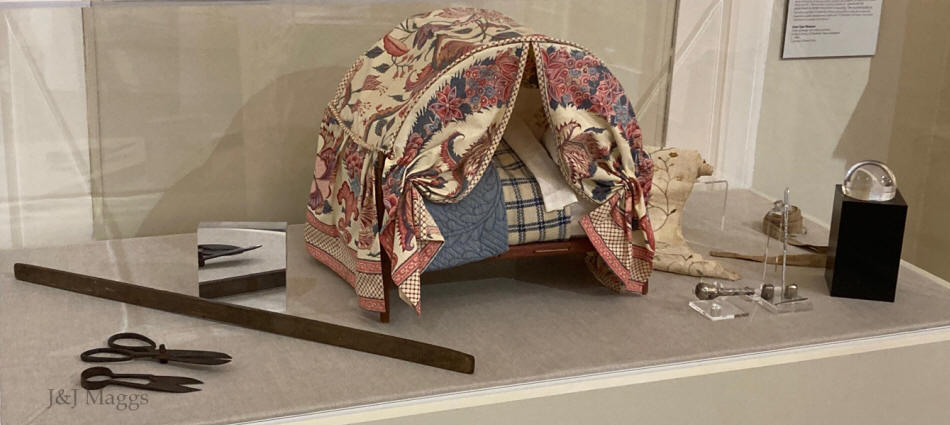
~ ~ ~ ~ ~ ~ ~ ~ ~ ~ ~ ~ ~ ~ ~ ~ ~ ~ ~ ~ ~ ~ ~ ~ ~ ~ ~ ~ ~ ~ ~ ~ ~ ~ ~ ~ ~ ~
It isn't often that we're invited to view an exhibition of an important collection and even rarer that we're given a showing by the curators of the collection. Many collectors of Americana are familiar with Peter and Nancy Cook, either by knowing them individually or as a couple or by being inspired by the rather large shadow they cast over the collecting world. Earlier in our career we frequently met Peter and Nancy at antiques shows in the northeast, but as our show schedule got smaller they were among the friends who vanished from our lives.
So when, as we were leaving the Deerfield Inn after a spontaneous lunch, I spotted Peter from behind, and although I hadn't seen his face, there was no doubt that it was Peter. When I called his name, and he turned and within minutes the four of us were marvelling over the coincidence. Peter and Nancy were at Historic Deerfield presenting a weekend workshop on sheep shearing. We made a date for following evening in our shop in Conway.
A few days lafterwards, we received a phone call from Peter, who wanted to purchase something they had seen in the shop. When weoffered to deliver it to them, in Berwick,he invited us to a private showing of their exhibition iat The Counting House Museum. What follows is a brief description and a few images taken during our visit. The show will remain through September and October, and we urge anyone with a passion for early textiles to visit.
~ ~ ~ ~ ~ ~ ~ ~ ~ ~ ~ ~ ~ ~ ~ ~ ~ ~ ~ ~ ~ ~ ~ ~ ~ ~ ~ ~ ~ ~ ~ ~ ~ ~ ~ ~ ~ ~
This exhibition explores the material culture of early domestic textile arts and the tools used to produce linen and woolen cloth in rural New England homesteads. Material goods provide a window into standards of living, self-sufficiency, economic diversification, and the transition from frontier life to settled communities.
The specialized tools used to process flax and wool, and the spinning wheels and looms on display are instructive artifacts that reveal the necessary individual skills and the collaborative family roles in creating yarn and cloth. Loans from the collection of guest curators Peter and Nancy Cook and selections from the permanent collection of the Old Berwick Historical Society reflect the art of creating homespun textiles in common use throughout the 18th century.
The Cooks have each devoted over fifty years to researching and collecting examples of domestic textiles, tools, and implements. They have studied and practiced domestic industries related to the design and production of homespun fabrics common to 18th-century vernacular homes. In addition to their research and collecting, the Cooks raise Lincoln Longwool sheep and grow flax on their 18th-century farm where they process the fibers in the manner of the regions’ earliest settlers. Years of producing materials and collecting regionally significant historic textiles have led their efforts in providing demonstrations, tours, and workshops for families, students, and teachers at the couple’s home, Tare Shirt Farm. (from the Society's website)
~ ~ ~ ~ ~ ~ ~ ~ ~ ~ ~ ~ ~ ~ ~ ~ ~ ~ ~ ~ ~ ~ ~ ~ ~ ~ ~ ~ ~ ~ ~ ~ ~ ~ ~ ~ ~ ~
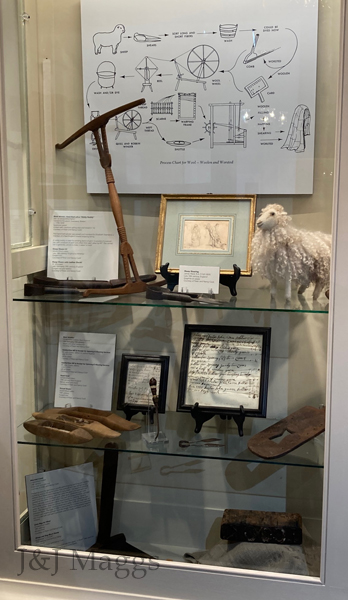
Some tools and documents relating to domestic cloth-making in 18th-century New England
~ ~ ~ ~ ~ ~ ~ ~ ~ ~ ~ ~ ~ ~ ~ ~ ~ ~ ~ ~ ~ ~ ~ ~ ~ ~ ~ ~ ~ ~ ~ ~ ~ ~ ~ ~ ~ ~
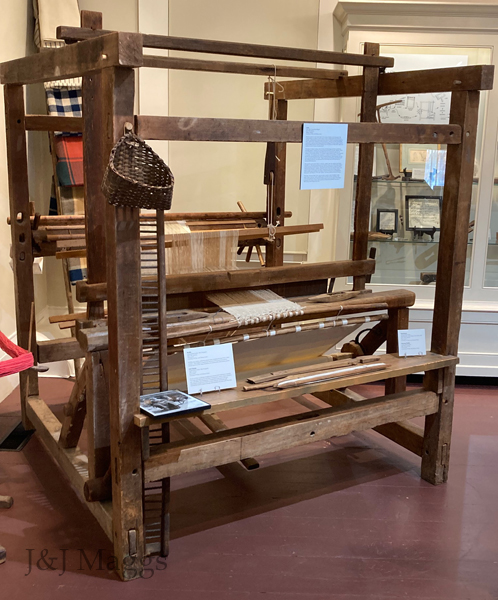
An 18th-century loom once owned by New York master weaver Faith Smith
given to Peter and Nancy as a wedding gift
~ ~ ~ ~ ~ ~ ~ ~ ~ ~ ~ ~ ~ ~ ~ ~ ~ ~ ~ ~ ~ ~ ~ ~ ~ ~ ~ ~ ~ ~ ~ ~ ~ ~ ~ ~ ~ ~
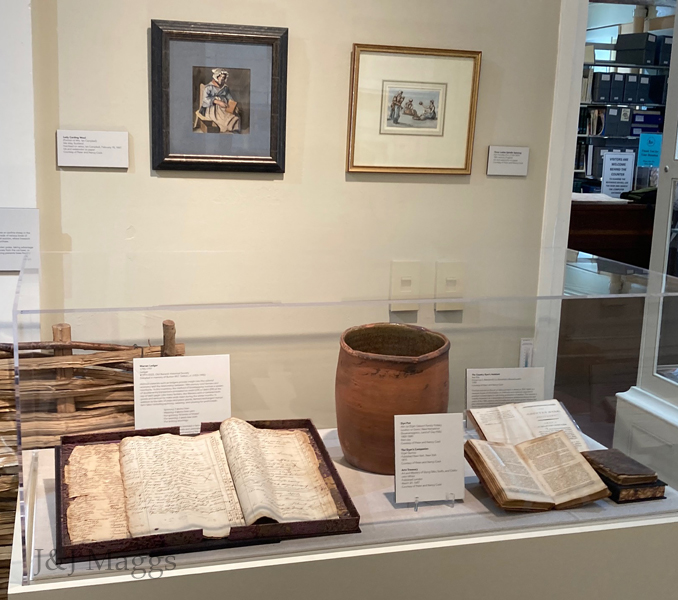
Documents from the 17th, 18th, and early 19th centuries and a redware dye pot
~ ~ ~ ~ ~ ~ ~ ~ ~ ~ ~ ~ ~ ~ ~ ~ ~ ~ ~ ~ ~ ~ ~ ~ ~ ~ ~ ~ ~ ~ ~ ~ ~ ~ ~ ~ ~ ~
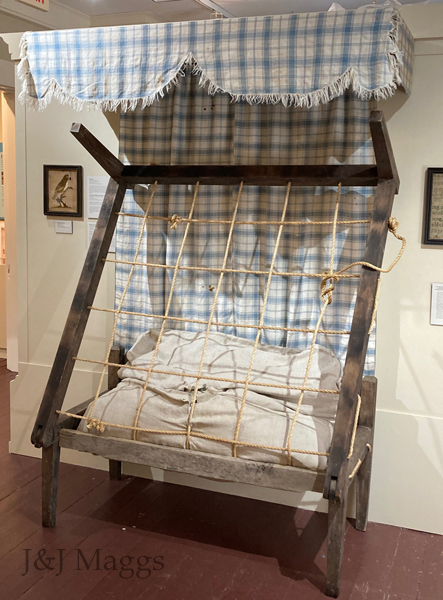
An 18th-century hardwood and rope press bed with tow cloth bed tick
~ ~ ~ ~ ~ ~ ~ ~ ~ ~ ~ ~ ~ ~ ~ ~ ~ ~ ~ ~ ~ ~ ~ ~ ~ ~ ~ ~ ~ ~ ~ ~ ~ ~ ~ ~ ~ ~
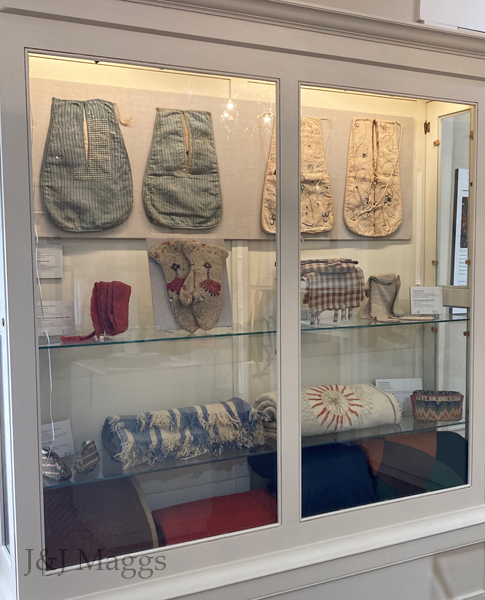
Pockets, mittens, trims, blankets, curtains, and other early fabric items
~ ~ ~ ~ ~ ~ ~ ~ ~ ~ ~ ~ ~ ~ ~ ~ ~ ~ ~ ~ ~ ~ ~ ~ ~ ~ ~ ~ ~ ~ ~ ~ ~ ~ ~ ~ ~ ~
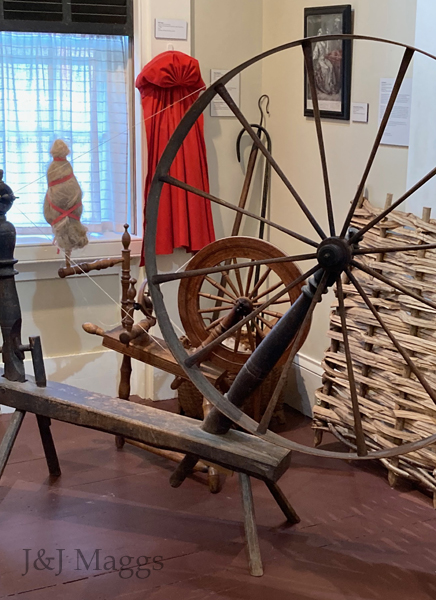
~ ~ ~ ~ ~ ~ ~ ~ ~ ~ ~ ~ ~ ~ ~ ~ ~ ~ ~ ~ ~ ~ ~ ~ ~ ~ ~ ~ ~ ~ ~ ~ ~ ~ ~ ~ ~ ~
This beautifully presented and insightful exhibition will run through September and October.
The Counting House Museum is open June-October, Saturdays & Sundays from 1pm-4pm and by Appointment.
Admission is by donation.
~ ~ ~ ~ ~ ~ ~ ~ ~ ~ ~ ~ ~ ~ ~ ~ ~ ~ ~ ~ ~ ~ ~ ~ ~ ~ ~ ~ ~ ~ ~ ~ ~ ~ ~ ~ ~ ~
Click HERE to visit the J&J Maggs Antiques home page.